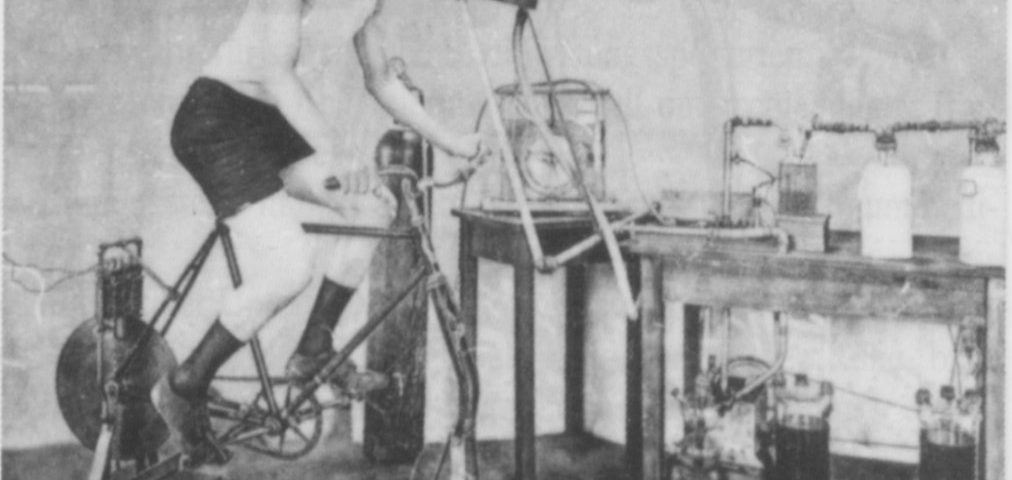
Trainer – What to eat and drink if you work out at different times of the day?
13 September 2017
Returning to sports after years of not training- how do I do it?
13 September 2017
Probably most of you know what FTP is. The notion of Functional Threshold Power has recently won the minds of riders equipped with power measurement devices. Ignorance of your FTP not only can condone us to the ostracism of the local training group but also reduce our development opportunities. Either way, the enemy is worth exploring. How?
What is FTP?
FTP is a concept investigated by Dr. Andrew Coggan, one of the pioneers of the use of power meters in cycling training. In its “golden standard” it is nothing but “a maximum average power, a cyclist can maintain during 60 minutes”. Period. The following extensions, explanations, annexes, epilogues, preambles, dissertations and readings of the concept of FTP are just an addition to the simple and precise definition of the founding father, Coggan.
Translating the definition into a somewhat more graphic description, we can say that FTP is “the maximum average power that an athlete can maintain in the long term without experiencing chronic fatigue symptoms.” When we exceed the functional threshold power level, fatigue will occur more and more quickly, while riding just below FTP can be performed for much longer periods of time. By fatigue, we mean the state of the organism leading to a reduction in the level of work completed.
The FTP level is most important in races lasting from 3 minutes to 3 weeks. That is quite a wide range. It reflects the essence of this parameter for further training development, although it is not the only and definitive determinant of the current condition of an athlete.
Why is FTP important?
Determining the correct level of functional threshold power at a given moment allows for:
– Training in the right ranges by setting appropriate power zones.
– Accurate analysis of the Performance Management Chart, thanks to proper CTL, ATL, TSB values.
– Learning the actual values of TSS for each training unit.
– Planning the fitness growth by following the correct ramp rate values.
– Avoiding overtraining/fatigue due to an accurate reading of the TSS, IF values.
– Reference to FTP level in the past and comparison.
– A real assessment of the possibility of a further increase of the athlete’s threshold levels.
Ways of determining the FTP
Below you can find the ways to set the FTP – from the most to the least reliable option.
- Test – average power obtained during the maximum 60-minute effort

The gold standard set up by Coggan is still the most reliable test of the current power on the FTP threshold. It allows you to determine the level of the current threshold power with an accuracy of 100%.
However, it has its limitations:
– It is very demanding mentally, and therefore it is difficult to repeat it regularly for most amateur cycling enthusiasts (every 4-8 weeks, depending on the needs and the training period)
– Only a few cyclists have a route close by, where they can take a 60-minute ride without any disturbances, with little traffic, good surface, etc
– It is intended only for experienced cyclists who can spread their strength in such a long maximum effort
– Weather conditions are essential for the result, which is often difficult to predict
- Test – 95% of the average power obtained during a maximum 20-minute effort

I am a supporter of performing this test on most cyclists. Why?
– You can do the test regularly, every 4-8 weeks
– 20 minutes is easier (though still challenging) to bear mentally than 60 minutes with maximum effort, so the result is less disturbed than in the case of regular CP 60
– It is easier to find an adequate route close by for the test
– The results of this estimation test (95% of the value) have been repeatedly confirmed by the results of, for example, efficiency tests
- Efficiency tests (progressive test)

Setting the power at different thresholds is just one of the tasks of testing in the laboratory. We will also determine the lung function, levels of acidification (lactate curve) or body composition and current blood parameters.
What to look for when choosing a test:
– Adjusting the test protocol to the athlete’s ability (e.g., 25-30W every 3-5 min for most amateurs, rather than 50W every 3 min as for professionals)
– Repeatable test conditions (same measurement equipment, calibrated in the same way)
– Hygiene (taking blood for lactate and blood testing, a clean mask for breathing)
– Individual description of the test results
- The normalized maximum power from a 60-minute section of a race

In the case of multiple races in a period of several weeks, we are sometimes unable to perform an FTP test. In such cases we can use a race file (and preferably a few race files in a given period) to set the FTP from the maximum 60-minute sections.
This is not an ideal method, but it gives you an idea of the current FTP status.
In the above chart, you can see a 60min maximum power from a 90min criterium race. The shorter the race (but with a minimum duration of 60min), the better it will allow us to estimate FTP due to the increased intensity of competition. In the case of many hours of racing, we can often not approach 100% of FTP during a 60-minute time frame, which may lead to false conclusions.
- Blood acidification levels

Contrary to a common belief, the method of determining training zones and threshold only by the level of acidification is not reliable for the majority of athletes.
Once, it was assumed that the anaerobic threshold is situated at the level of 4mmol/l. In the meantime, many studies have shown that in some athletes it is lower or higher, and the golden standard does not exist. So you can have a rapid acceleration of muscle lactate ejection at both 3.4mmol/l and 4.3 mmol/l. A reference to the 4 mmol/l standard will give us some idea, but it will not be precise.
Instead, it is worth correlating several parameters that we examine during the efficiency tests to be able to determine the metabolic zones and threshold: oxygen intake, the level of generated power, the level of muscle acidity, perceived exertion (RPE), RER, RCP.
- Power distribution chart from the cross-section of a large number of training files

If we cannot, or for some reason, do not want to perform tests or efficiency examinations, we can use the database stored in our training account.
Pay attention to the instances where power drops the most. When you enter the zone above FTP, fatigue occurs more and more quickly, and you can spend relatively less time there. You can observe this in the above WKO4 + chart.
- Inference based on a single training file
This method can be used when you want to confront the results of tests with other results of a given athlete. If the test result seems to be too high/understated, we can refer to different maximum values in the range of 10-60min and check whether they coincide (in appropriate proportions) with the estimated FTP threshold.
Currently, in the WKO4 software, we can follow the FTP estimation based on training and race files, without the need to test (so-called mFTP). I would place this option between points 2 and 3. Estimation is still not the same as the real field conditions and this is confirmed by the analysis of files of many athletes – quite often an FTP estimated by the program is overstated or underrated by a few percentage points, which in case of sticking to this value would lead to overtraining or under-training in the long-term.
Therefore, among other reasons, the efficiency tests are not in the first place on this list, as they do not reflect 100% of the conditions in which the competition takes place and where we use the actual usable power in its entirety. Still, the best option is to analyze what the athlete is capable of achieving in real training conditions. The confirmation of the actual level of physical condition is a sports result, which consists not only of FTP but also many other factors. And all the above-mentioned methods need to be complemented by the experience of the coach who can adequately select the loads and the correct reaction to the athlete’s fettle while exercising at the designated threshold.
BIBLIOGRAPHY
- Hunter Allen and Andrew Coggan, Ph.D., “Training and Racing with a Power Meter 2nd ed.”, 2010
- Peaks Coaching Group Power Certification Course, “Advanced Tracking and Analysis,” 2015

